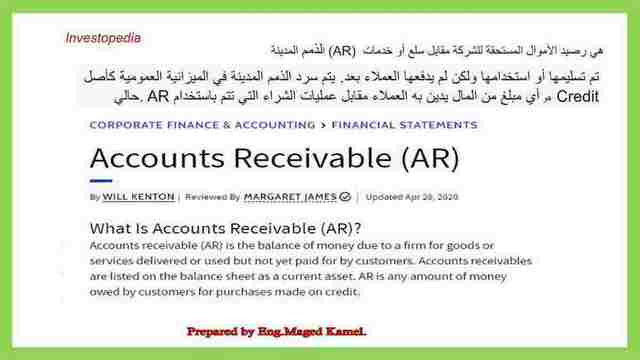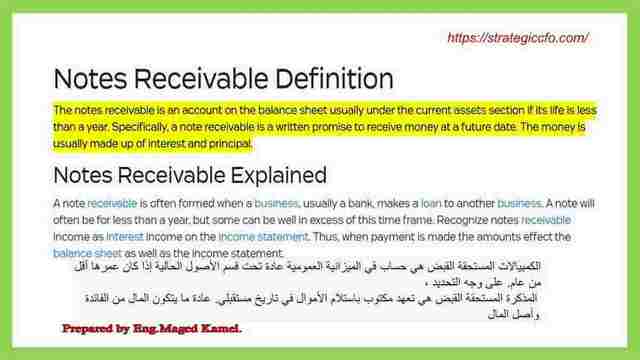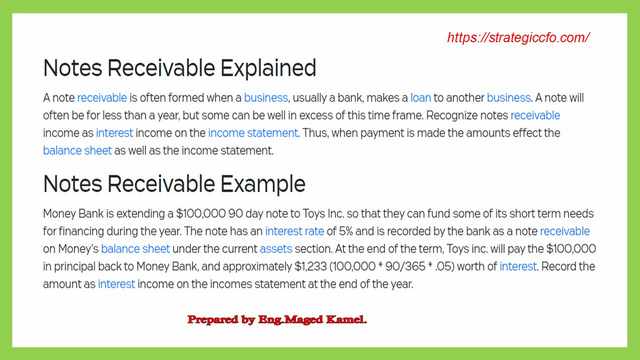The Types of assets-part-2.
The definitions are quoted from different sources.
What are the accounts receivable AR?
What are Accounts Receivable and Accounts Payable? these are business terms that are primarily used in accounting. the link is from Investopedia.


The real difference between Accounts Receivable vs Accounts Payable is clear from the names themselves. When as a business you buy any product and don’t pay for it upfront, then the amount that you owe is accounts payable.


On the other hand, if as a business a customer buys from you, but does not pay immediately, then that amount is accounts receivable for you.
What are the notes receivable?
Notes receivable which is the following definition that is quoted From the strategic CFO link. The balance sheet format comes in three sections: liabilities, and owner’s equity. The notes receivable is an account on the balance sheet, The balance sheet is a financial statement that shows a company’s financial position at a point in time.


The balance sheet format comes in three sections: assets, liabilities, and owner’s equity.
The next slide image explains the definition of Notes receivable and a given example of a bank issuing Notes receivable for 90 days by a value of $100,000 to a Toy’s company with an interest rate of 5%, the interest paid is recorded as notes receivable.
A note receivable is a written promise to receive a specific amount of cash from another party on one or more future dates. This is treated as an asset by the holder of the note, and a liability by the borrower. Overdue accounts receivable are sometimes converted into notes receivable, thereby giving the debtor more time to pay, while also sometimes including a personal guarantee by the owner of the debtor entity. The guarantee provision makes the note receivable easier to collect than a standard account receivable. When a note receivable originates from an overdue receivable, the payment tends to be relatively short – typically less than one year.


Another example of Notes Receivable, quoted from Accounting Coach
A company lends one of its important suppliers $10,000 and the supplier gives the company a written promissory note to repay the amount in six months along with interest at 8% per year. The company will debit its current asset account Notes Receivable for the principal amount of $10,000. The credit of $10,000 will be to Cash.
If a company borrows $100,000 from its bank and signs a promissory note to pay 6% interest quarterly and the principal amount in 9 months, the bank will debit its current asset account Notes Receivable and will credit Cash or Customers’ Deposits for the principal amount of $100,000.
What are marketable securities?
Marketable securities are unrestricted financial instruments that can be readily sold on a stock exchange or bond exchange. Marketable securities are often classified into two groups: marketable equity securities and marketable debt securities. Marketable equity securities include shares of common stock and most preferred stock which are traded on a stock exchange and for which there are quoted market prices.


Marketable debt securities include government bonds and corporate bonds which are traded on a bond exchange and for which there are quoted market prices.
Definition of materials.
Material is a substance or mixture of substances that constitute an object. Materials can be pure or impure, living or non-living matter.


Materials can be classified based on Their physical and chemical properties, or on their geological origin or biological function. Materials science is the study of materials and their applications.


Raw materials can be processed in different ways to influence their properties, by purification, shaping, or the introduction of other materials. New materials can be produced from raw materials. materials are assets until they are sold.
This is the pdf used for illustration for the post.
Engineering Economy. This is a great link that illustrates different types of economies, and how to make economic decisions. the Time value of money, Applying Theory to Practice.
this is another link from Wiki for the term account receivable.
The next post contains the remaining types of Assets for Economy part- 3.

